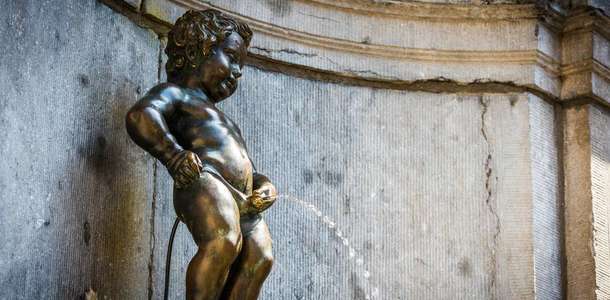Who made the peeing boy statue?
The Peeing Model (Peeing Boy, Peeing Mannequin), made by baroque sculptor Hieronymus Duquesnoy (Jerome Duquesnoy) in 1619, has become one of the famous symbols of Brussels, the capital of Belgium, over time.

Originally named Manneken Pis, this statue was designed as a fountain and is known as Little Man Pee in English and Le Petif Julien in French.
The 61-cm-tall fountain with the theme of a peeing boy was made by Baroque sculptor François Duquesnoy's son Hieronymus Duquesnoy, whom he raised in his workshop. Made of bronze, the Peeing Boy Statue was stolen many times and was last restored from the original in 1965.
Manneken Pis
1619
Bronze, height 61 cm
Near the Grande Place, Brussels
Manneken Pis is a small bronze fountain sculpture in Brussels designed by Jérôme Duquesnoy the Elder. The name means 'Little Man Pee' in Dutch. It depicts a little naked boy urinating.
The fact that the statue is so famous is based on various rumors about it. The most common of these concerns the duke, Godfrey III, while the story dates back to 1142. Two-year-old baby Godfrey, who was fighting against the enemy with his army, was pulled to the top of the tree in a basket and pissed on the soldiers passing by while their guns were firing, ensuring the war was won. In another version of this superstition, it is believed that the baby saved the city by pissing on the bomb that fell at the bottom of the armory. According to another legend, the fire in the city was extinguished by the baby's peeing, and then that baby was declared a saint and a statue was made while peeing. While there are discussions that it is a completely personal sculpture, the most common story on this subject is that a tourist doll, who disappeared in Brussels in 1619, was found while peeing in a garden. The merchant father had a fountain built in the city with the child's depiction to honor the locals of Brussels who participated in the search after the child was found, and expressed his gratitude.
While the Peeing Child Statue became a fairy tale tool in time, it is frequently used in fountain figures today. The statue, which was dressed in costume from time to time in Brussels, has about 800 clothes today. While tourists visiting Brussels in costumes such as sailors, tradesmen, soldiers, superheroes and statesmen represent their countries, it can also be seen that it turns into a statue that pees beer at some times of the year as part of the festival.
